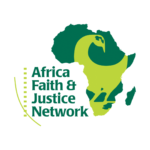In the early 1990’s, six women began a process that transformed much of the Wajir district in northeast Kenya. Attempting to cope with what was described as a “disaster waiting to happen,” these women formed a community-based approach to halting the violence. Their efforts should serve as an example to communities across the continent who are seeking another path to peace.
In 1991, a state of emergency was declared in the Wajir region as drought destroyed nearly 80 percent of the animal stock in this primarily pastoral society. As a result of state collapse in Somalia, refugees and weapons flowed into the region. Food and water were scarce; weapons and competitive pressures were prevalent. Tensions between the region’s three main tribes were heightened following Kenya’s 1992 election. Soon after, violence broke out in the region, killing over 1200 people. Continued clan-based looting, rape, and murder created a sense of lawlessness in Wajir district.
After leaving a wedding ceremony early in order to avoid violence, the six women of Wajir began discussing ways to improve their situation. They discussed how the local market, a place which had traditionally been viewed as a sanctuary from violence, was now expressing these clan rivalries. Women began to refuse to sell to women from other clans. Disputes led to fights. Something had to be done. As explained by one of these six women, Dekha Ibrahim Abdi, “The problem had become explicitly ours. We women had no choice. If your house is on fire, what do you do? Sit and wait for someone else to extinguish it? No. You find a way to put the fire out.” These women began to engage the issues in the market. They found that most women disliked these economically irrational patterns of behavior, and were willing to cooperate with a group of women comprised of members of each clan. Thus, the Wajir Women Association for Peace (WWAP) was created. It began with a simple mission: to ensure that all had equal access to a safe market. Whenever disputes or arguments arose, members would quickly bring the parties together and discuss the problem.
But it couldn’t stop there. Once the market had become peaceful again, the group decided that it was necessary to figure out a means to extend this sanctuary into other parts of the community. Members of WWAP decided that the leading elders, some of whom were known warlords, must be convinced to unite in a similar fashion. In a patriarchal society characterized by persistent warfare, this was certainly no small task for a group of women. It is at this point where the position of women in Somali society and the specific makeup of the group provided direction. As women in this society often marry outside of their individual sub-clans, in many cases, it is often their father and their brothers fighting their husband and their sons.
Furthermore, as natural intermediaries with connections and associations to all of the regional clans, a small number of women were able to assemble the 30 most important elders in the region. During this meeting, members of WWAP asked a highly respected elder from the smallest clan to open discussion. While the women patiently watched, the elder began a speech that, as Dekha explained, “had everyone somewhere between embarrassment and tears.” The elders then agreed upon the need to work toward peaceful relations, and soon thereafter formed the Council of Elders for Peace. Members from this group routinely met at highly populated areas such as the mosques or town centers and spoke of the need to end violence. Following the example of the women in the market, the elders formed what was later called “rapid response teams” from which these respected and well connected leaders would move to the source of the conflict in a moments notice in order to negotiate settlements.
And it couldn’t stop there, either. What was initially a group of six women multiplied into an umbrella of interconnected peace groups, each with a distinct function. Although the efforts in the market and in the town centers were important, as long as the armed youths still resided in the bush, jobless, little progress could be made. Soon, Youth for Peace Groups were born. Their mission was to convince youths to trade their guns for jobs. In order to do this, peace workers connected with local business. The doors of the Youth Polytechnic were reopened, offering educational opportunities to former soldiers. In 1996, members from each of the peace groups met with political and economic leaders, forming the Wajir Peace and Development Committee (WPDC). The WPDC would be located within a governmental institution. These efforts allowed the peace groups to retain local autonomy while providing for national support and coordination. On nearly every level of society in Wajir, peace groups were created and in constant dialogue. The seeds of a sustainable peace were sown.
In many ways, with the rising food prices, the effects of Kenya’s latest elections, and the continued state failure in Somalia, the context surrounding Wajir today is similar to that of 1991. Although sustainable, their peace is undoubtedly vulnerable. Dekha explains that “Peace is not an event, an end, but…peace is the way, though the journey is long and the road winding and difficult.” The story of Wajir may be recognized as a roadmap for this journey, a map that may direct and inspire not only women, but all who seek to begin or participate in grassroots change. AFJN’s project on restorative justice aims to amplify these types of peacebuilding projects. When speaking of Africa, it is easy to focus only on the failures. Let us not forget the power and potential of six dedicated Kenyan women.
This article was published first in our May-June, 2009 newsletter
By Andy Fallonn
